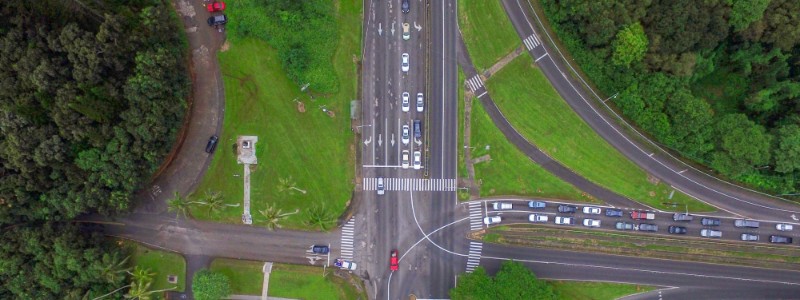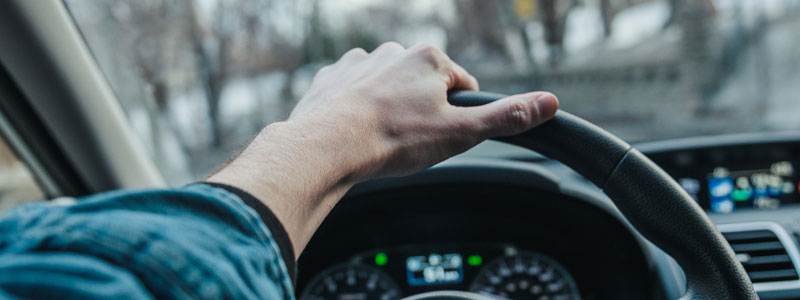The Risks of Using Car Insurance Tracking Devices
“Drive and save” programs are nothing new. Progressive introduced their Snapshot program in 1998. Since then State Farm, Allstate, Liberty Mutual, and Nationwide among others have rolled out similar programs to track driving habits and reward drivers with safe driving discounts. But it isn’t 1998 anymore, and concerns about who sees our data and how […]

October 10, 2019
“Drive and save” programs are nothing new. Progressive introduced their Snapshot program in 1998. Since then State Farm, Allstate, Liberty Mutual, and Nationwide among others have rolled out similar programs to track driving habits and reward drivers with safe driving discounts.
But it isn’t 1998 anymore, and concerns about who sees our data and how our data is used have made consumers wary of Snapshot and other tracking apps. How much information do these programs actually collect? What else could your insurance company be doing with your data?
As to whether or not you’ll actually receive a discount from using a car insurance tracking device or app, that depends on how your insurance company defines “safe driving”. But if you are in a car accident, your insurance company may use your tracking data to assign fault where it isn’t due.
Brief History of Drive Tracking Programs

Once upon a time, plugging a telematics device into the car was the only way to collect driving data. Now insurance companies can collect the same information via smartphone app or OnStar.
Telematic devices monitor a variety of data. Common data includes acceleration rate, drive speed, braking speed, and total miles driven.
DriveWise by Allstate and Snapshot by Progressive are two of the few programs that still offer a telematics device as well as an app version for your phone.
Apps work the same as the plug-in device, but often require Bluetooth or location services to be turned on every time you drive. You can then see how your driving habits stack up on the app, on your insurer’s website, or via email reports.
Insurance companies do not want to part with a single dime unless they have to.
As to whether or not your driving habits will actually earn you a discount, the boring answer is: it depends. State Farm claims that some users could earn as much as a 50 percent discount. Allstate offers a discount just for signing up for Snapshot, and the average Snapshot user saves 145 dollars when they renew their policy, typically 6 months after signing up for the program.
But these are the numbers put out by the companies. As to whether or not customers feel like they’ve gotten their money’s worth from these programs, reviews are divided. Some drivers even saw their rates rise after using drive tracking programs. And as some have pointed out, there is the possibility that insurance companies will simply raise their premiums to cancel out any earned discount.
What Data is Collected by Drive Tracking Programs?

Insurance companies use data collected by their driving programs to determine whether or not you qualify for a safe driving discount. Different insurance companies use different metrics to measure safe driving.
The Allstate Drivewise app stores the time of day you drive, braking, speed, parking location, mileage, and trip data. Allstate only uses the time of day, braking, and speed to calculate monthly discounts.
Drive Safe and Save from State Farm dings your driving performance if you take “quick, sharp turns,” and tracks acceleration and braking speeds. The app also tracks how often your phone is used while you drive, though they say phone usage won’t affect your discount.
The fact that your insurance company gets to decide what safe driving looks like may ring some alarm bells. After all, what’s to stop them from setting the bar so high that earning a discount becomes impossible?
And there is the mystery of what happens to your data once it is collected. Besides earning you a discount, could your insurance company be using your data for something else? And if you are ever in a car accident, could your data be used against you?
How Do Insurance Companies Use Your Data?

American consumers are more concerned about who has access to their personal data now than they were when tracking programs became available. With good reason! Your web browsing history alone is worth thousands of dollars to data brokers who collect and sell your personal data to advertising firms, insurance companies, and who knows who else.
In 2015, a survey by the Pew Research Center found that only 35 percent of adults surveyed would allow their insurance company to track their driving habits in exchange for a possible discount. About 45 percent believed the risks outweighed the potential reward. Many expressed concerns about how insurance companies would use their data, especially location tracking.
State Farm, Progressive, and Allstate say that your personal data may be shared with affiliated advertisers. Google, Facebook, and other social media sites have been doing this for years. If you’ve seen a Facebook ad for baby shoes after Googling “baby clothes”, that’s your personal data at work. However, because your insurance company also knows your social security number, marital status, and health information, it feels more insidious when they do it.
I believe insurance companies will try to use the raw data to trap our clients into some comparative fault when none really existed under the circumstances.”
Sarah Graziano, Attorney
And of course, your data is also used to resolve insurance claims. For instance, Snapshot by Progressive tracks your car’s location. Progressive can use that data “without limitation” for determining when and where your car accident may have occurred.
But this doesn’t rule out using the rest of the data they gather from the device or tracking app. Nor does it rule out the possibility of using your driving habit history to try to assign some comparative fault, which we’ll explain more about in the next section.
How Could Tracking Apps Affect Your Car Accident Claim?

As Hensley Legal Group attorney Sarah Graziano pointed out, drive tracking apps do not take other drivers’ behavior into consideration. If you slam on your brakes to avoid an accident, the app wouldn’t know that you were driving defensively. The raw data only shows aggressive braking.
Here is the problem: your insurance company may use raw data from the tracking device to unfairly assign fault.
In an Indiana car accident, one person is rarely 100 percent at fault. Instead the fault can be shared between the involved parties. Let’s say for example that Driver 1 rear-ended Driver 2. The majority of the fault almost always lies with the driver who does the rear-ending. But if Driver 2 had both brake lights out, Driver 2 could share some percentage of the fault.
In Indiana, you can recover damages from the other driver as long as you are 50 percent or less at fault. Your total settlement amount is then reduced by your percentage of fault. For example, if you were awarded $100,000 but were found 25 percent at fault, then you would only receive $75,000. The less fault you have — the better you were driving at the moment of the accident —the more money you could recover.
Insurance companies do not want to part with a single dime unless they have to. Therefore it is to their benefit to prove that whoever is trying to recover damages from them had as much fault as possible because that means the final settlement amount will be that much smaller, even if it isn’t fair to the person seeking damages.
“I believe insurance companies will try to use the raw data to trap our clients into some comparative fault when none really existed under the circumstances,” says Ms. Graziano.
If you opt in to a drive tracking program like DriveWise or Snapshot, you give your insurance company permission to use your driving data to resolve insurance claims. But that doesn’t guarantee that they will use the data in your favor.
Here are three scenarios where the data from your drive tracker could potentially be used against you.
Scenario 1: One Party is Uninsured

Let’s say that you were in a hit and run. Every car insurance policy in Indiana must include uninsured/underinsured motorist coverage (unless you waive it in writing) that helps pay for accidents caused by drivers who don’t have insurance, as well as accidents with phantom drivers, like hit and runs. Your uninsured motorist coverage would cover $25,000 per person up to $50,000 in personal injuries, and $10,000 in property damage.
Remember, your insurance company wants to spend as little money as possible. If the data from your drive tracking app shows that you could have contributed to the crash – say you were taking a corner quickly, or if you didn’t brake as quickly as you could have – then your insurance company could assign you a higher percentage of fault to get out of paying the full $25,000. And since it was a hit-and-run, there’s no data from the other driver to help dispute their findings.
Scenario 2: The Same Company Insures Both Parties
Let’s say that you are in a car accident with a driver who ran a stop sign at a four-way stop. Both of you are insured by State Farm, and both of you use their Drive Safe and Save app (State Farm insures over 43 million vehicles so the odds of this happening are higher than you think). Even though the other driver has more fault, you’ll both need to file through State Farm.
State Farm now has two claims to pay instead of one. They want to keep the final settlement amounts as small as possible. To do that, they may try to split fault as equally as possible between the drivers.
Drive Safe and Save tracks acceleration, speed, braking, cornering, and phone use. State Farm can use the raw data collected by the app to say you deserve a higher percentage of fault.
Scenario 3: Different Companies Insure Both Parties
There is a possibility that State Farm could share your driving data with the other driver’s insurance company if the raw data suggests you were less at fault. The other insurance company may then have to pay more if you file for damages. This would mean less damages for State Farm to cover. A good thing for the insurance company, right?
But State Farm hesitate to share customer data with a competing insurance company. Even though they can use your data to settle insurance claims.
How Can a Personal Injury Attorney Help?

Insurance companies use a formula to determine a fair settlement after a car accident. But numbers and raw data don’t take into consideration the long-term effects a car accident can have on your life.
That’s where a personal injury attorney can help. They know that a fair settlement should cover not only your medical bills, but should also make up for future lost wages caused by your injuries, long-lasting mental trauma, and the emotional toll your injuries have taken on you and your family.
Ms. Graziano has yet to handle a car accident injury case where drive tracking data is used as evidence, and she says she doesn’t plan to. No formula can determine the true cost of a serious car accident. If you suffered an injury in a car accident and worry about receiving fair compensation, our experienced personal injury attorneys can help.
Call Hensley Legal Group today or chat with us online for a free conversation about your personal injury claim.